Columba livia domestica
Having previously written about photographing birds during the pandemic, it turns out I’ve kept1 at it, and one species in particular has captured my interest more than all the rest: the humble pigeon.
The reasons for this are partly practical: I find myself approaching bird photography from a photography perspective as opposed to a birding perspective – meaning that nice, clean, well-composed shots of common species (ideally getting up to all kinds of hijinks, but portraits are neat, too) excite me more than capturing found-footage-esque views of, say, an elusive little bittern. And pigeons are just about the most abundant and least wary species around where I live, so they’re really easy to photograph – even at macro distances if you bribe them with a few sunflower seeds.
Pigeons are also really varied in terms of their plumage, which is uncommon among wild birds. That’s because “city pigeons” aren’t wild birds by any definition – they’re the descendants of domestic pigeons; color has been bred into them and shyness bred out. If you want to learn more, please read this excellent piece of pro-pigeon propaganda, here’s just an all-caps taste:
THEY WERE ONCE BELOVED PETS, SPECIAL MESSENGERS, EXQUISITE SHOW-WINNERS, AND PRIZED LIVESTOCK. THEIR PRETTY COLORS WERE DELIBERATELY INTRODUCED BY HUMANS. AND NOW THEIR HUMANS DON’T LOVE THEM ANY MORE.
So, ever since upgrading my camera last spring2 and acquiring modern telephoto3 and macro4 lenses, I’ve been taking lots of pigeon pictures. I pictured pigeons. Pigeons, pictured.
And a recent episode of the excellent podcast Let’s Learn Everything (can’t recommend it enough!) just so happened to discuss pigeons, which inspired me to go through said pigeon pictures and pick out the best ones. Here they are.

Met this one (and its friends in the background) in the depths of Stuttgart’s subway network – it’s got an unusual bald spot around its eye. I wonder if this flock ever ventures outside. People seem to sometimes leave grains for them at the disused end of one of the platforms.
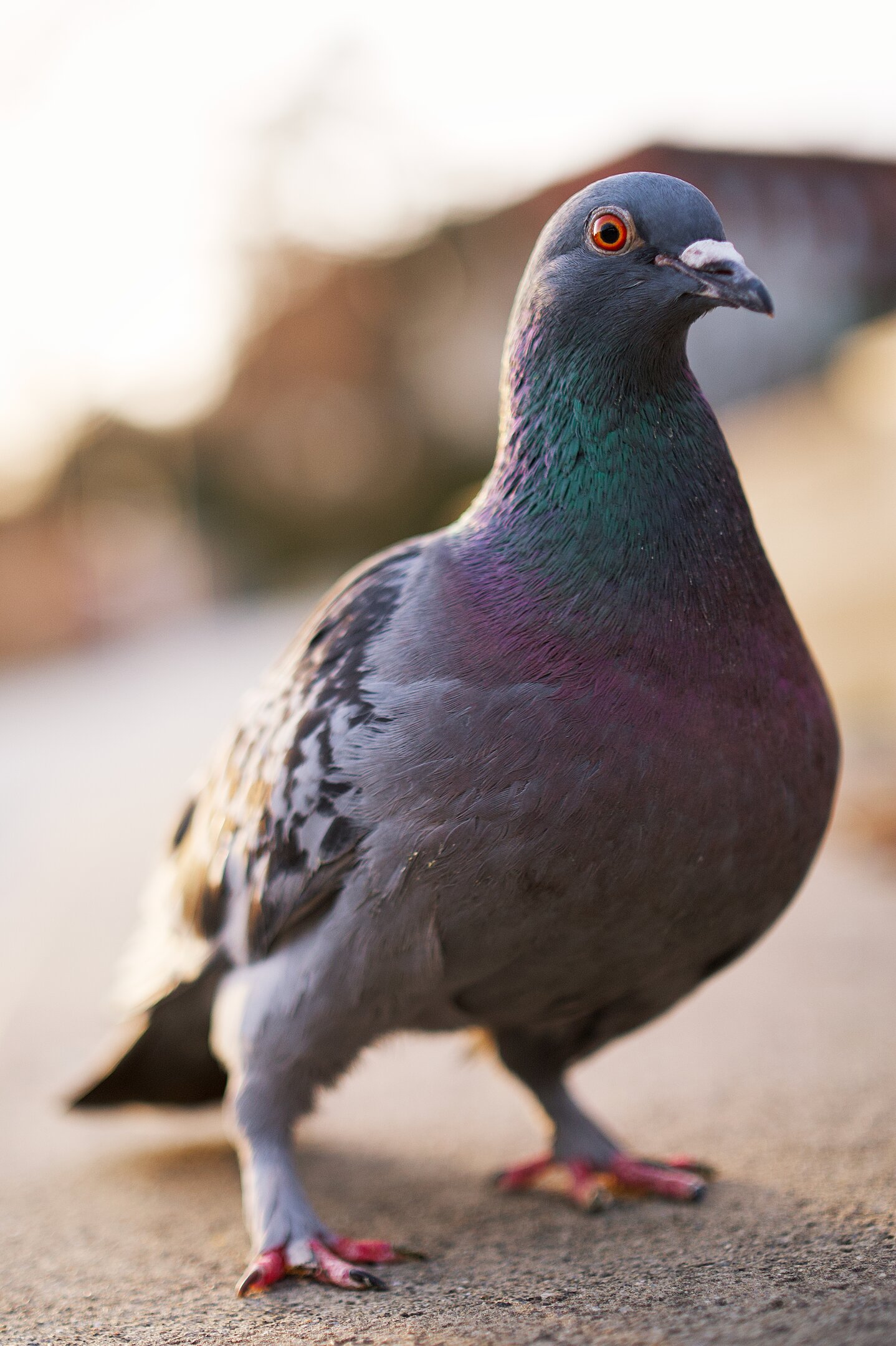
Easy to recognize by its feather-covered legs, this member of the local flock always used to be super competitive when I would pass out sunflower seeds – pecking at other pigeons and making sure it got the most seeds – but I haven’t seen it around lately.
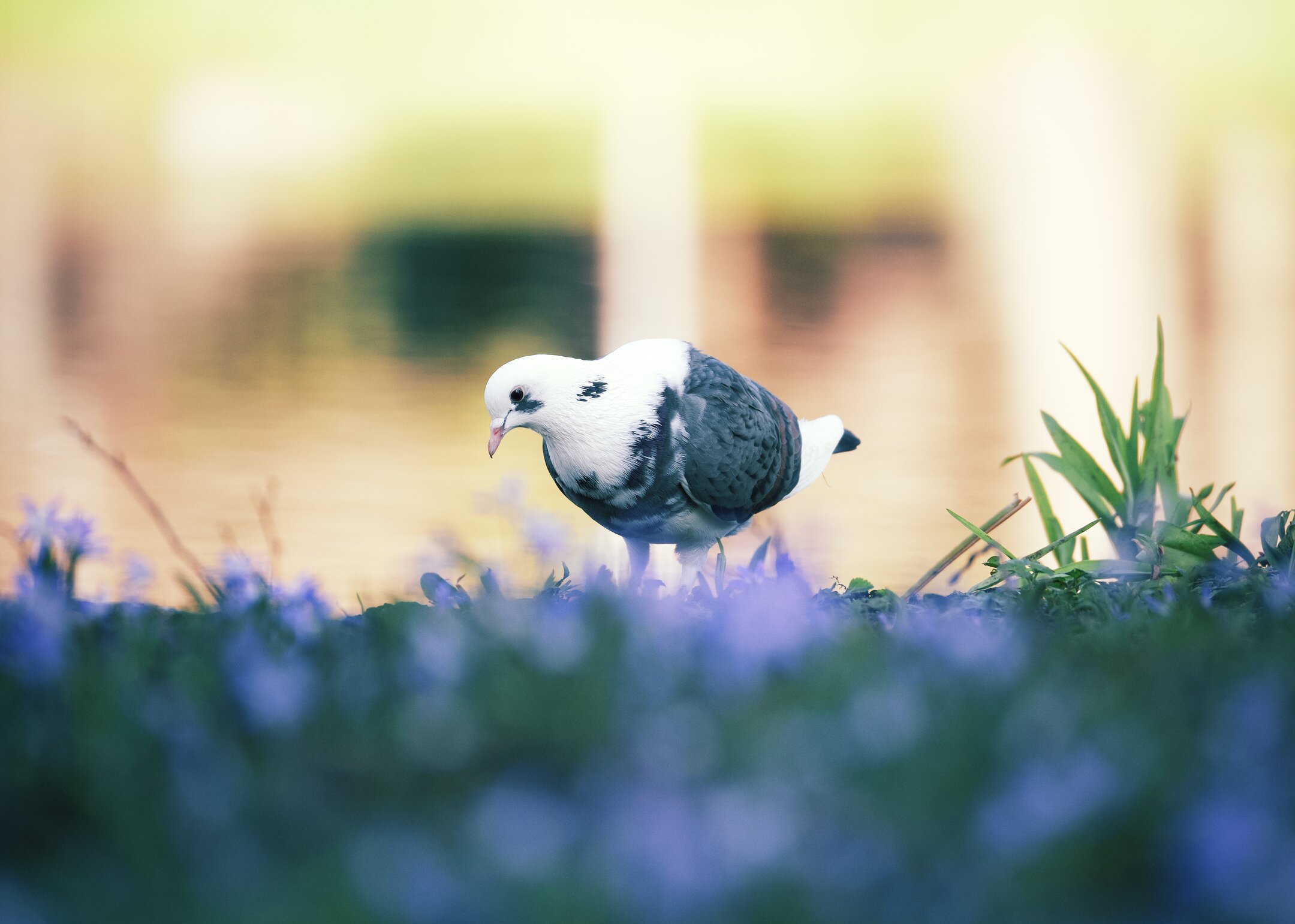
An especially pretty pigeons I saw at the Schlossgarten – a large park that’s home to lots of geese – in Stuttgart.

Trying out an old manual Belarusian fisheye lens I’d bought on eBay a while ago, I scattered some sunflower seeds near one of the local pigeon hangouts, placed my camera on the ground next to it, walked back a few steps to put the pigeons at ease, and took a series of shots via remote control.

A fluffy boi perched on a horn speaker.
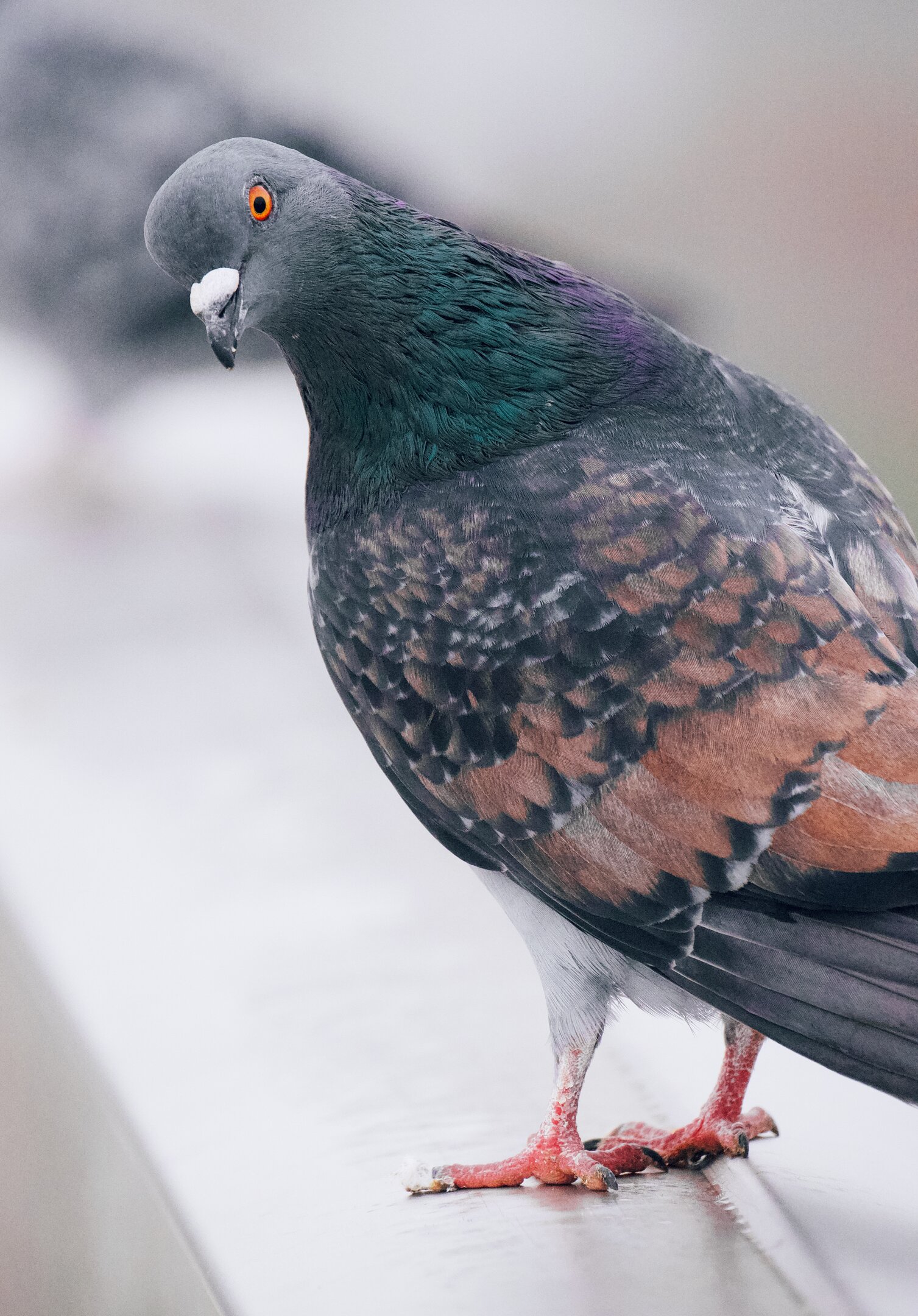
This pigeon knows me. I think. Whenever I walk past the bridge it lives under, it flies up, circles around my head to make sure I’ve noticed it, and lands a few steps from me, expecting a handful of sunflower seeds. (Kind of a like an old-fashioned bridge troll, come to think of it.)

Two teenagers – they’ve left the nest (with some baby fuzz still visible), but are still being fed by their parents.

This might be my highest-resolution portrait yet. It’s not easy, even with a fast macro lens – pigeons rarely keep still for more than a second when a big scary human is around. Taken in late winter with the morning sun at a low angle, highlighting the structures within this one’s iris.


I took these two shots on vacation in Korea last winter. Having only brought a 33 mm lens, bird photography was tricky, but the pigeons aren’t any more shy over there than they are here. Top: Just a little dude on Wolmido; bottom: a really pretty one on Gyeongpo Beach in Gangneung.

With a duck!

I like how the purple-iridescent feathers on this pigeon’s neck are rendered here. Also: more eye detail!
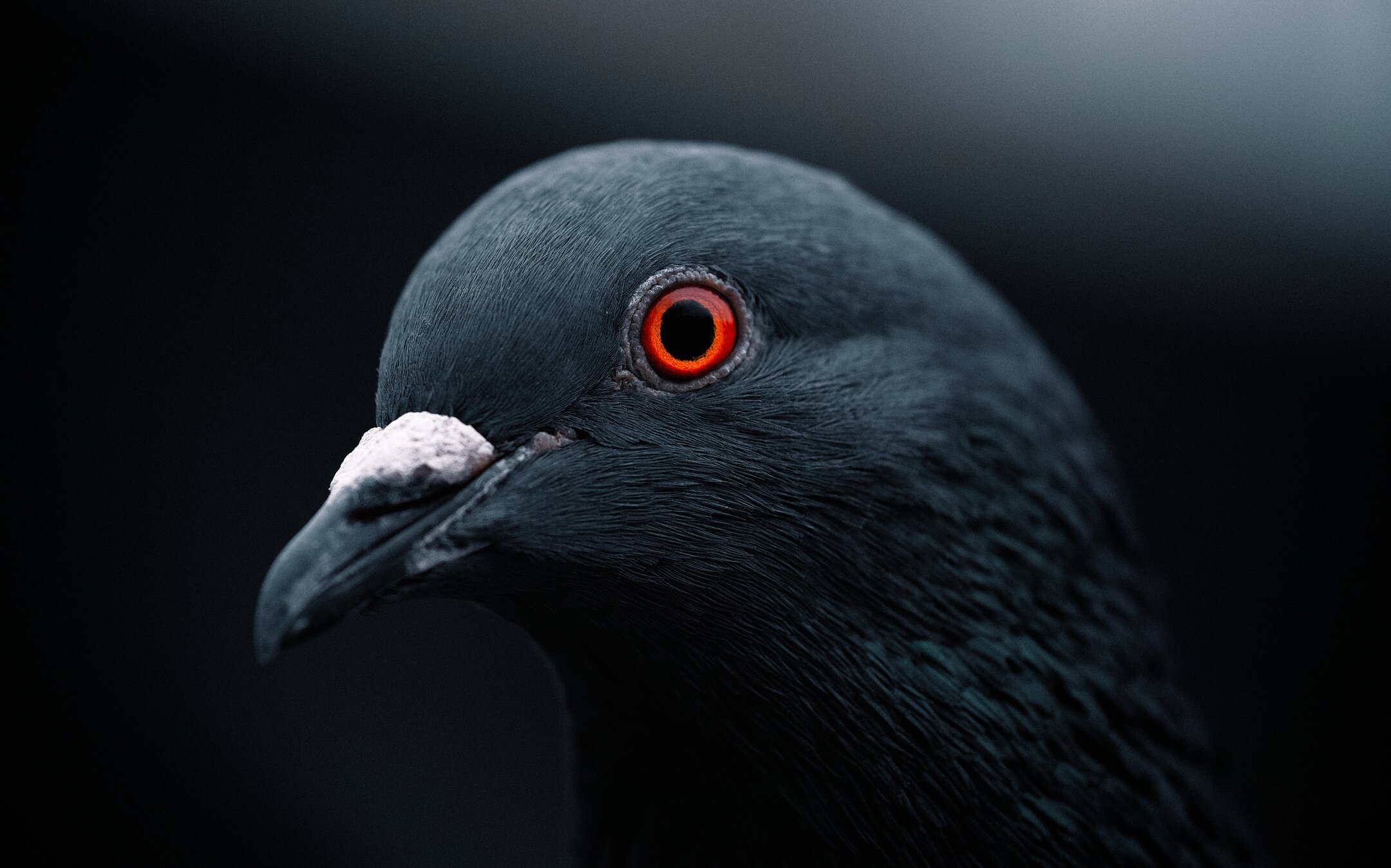
Trying out presets in Pixelmator Pro, I came across one that turned an underexposed portrait into what I like to call a “dark mode pigeon”. Looks especially menacing with an unrealistically-oversaturated eye.
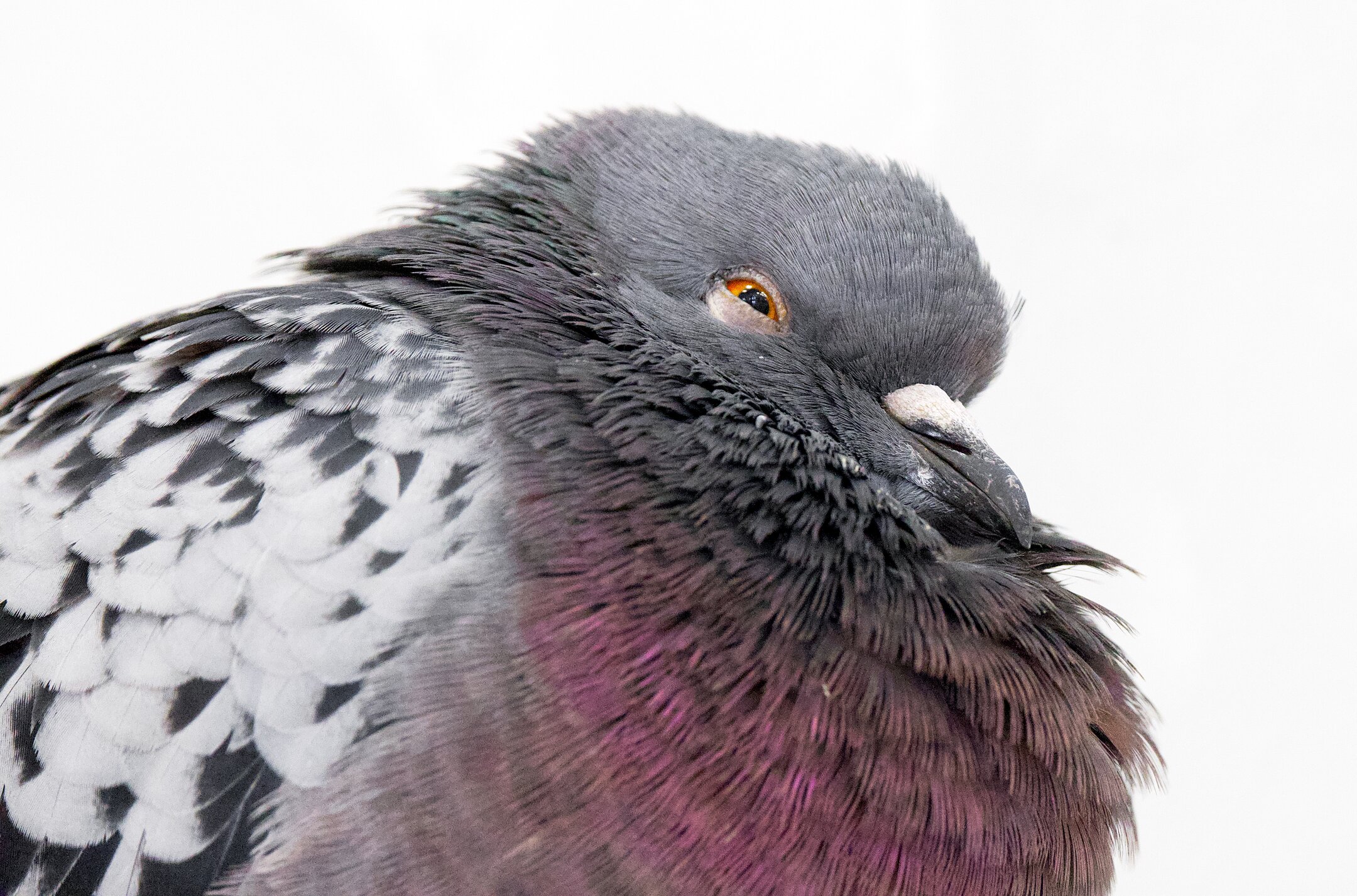
A sleepy one.
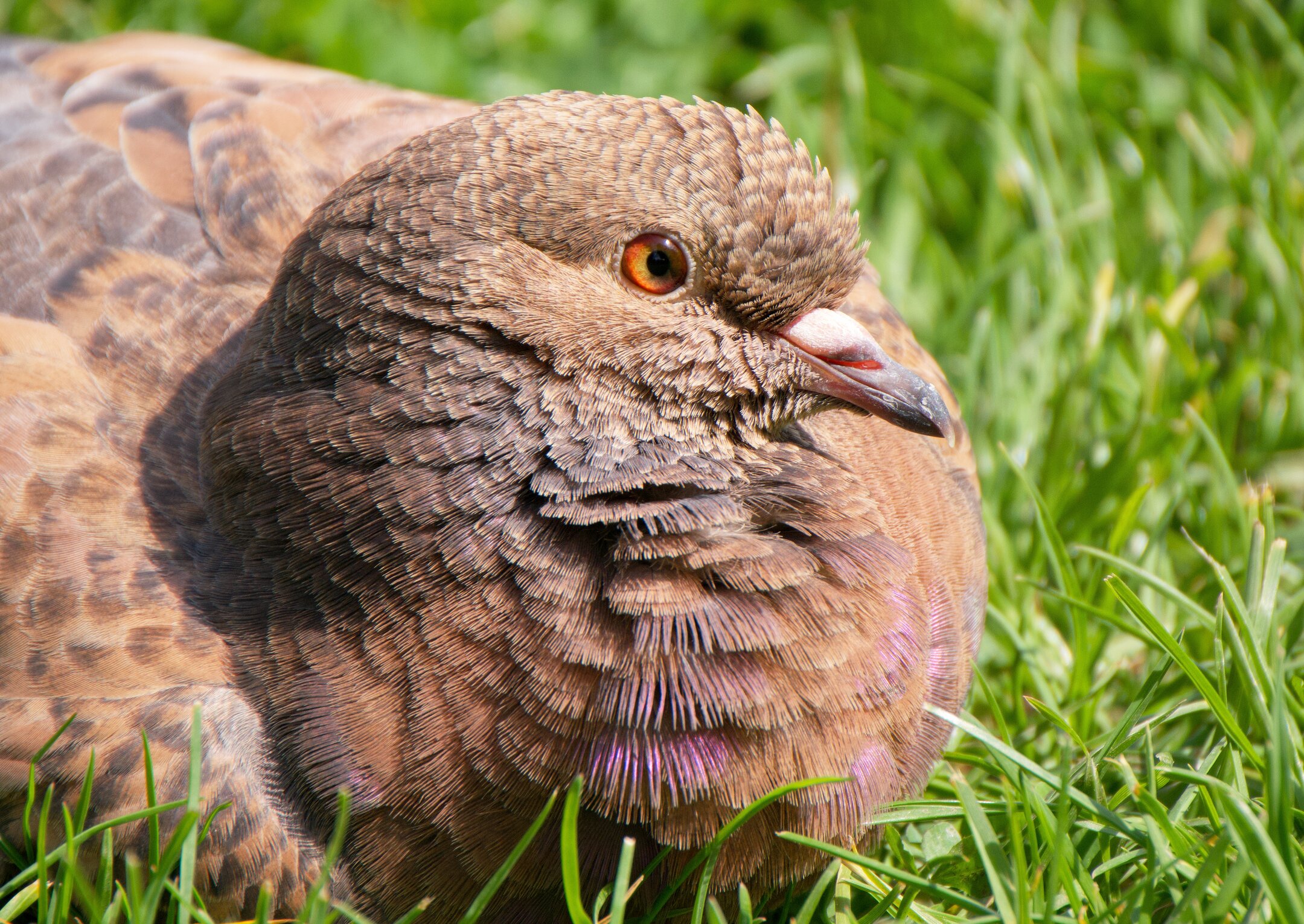
Really interesting plumage – almost reminiscent of an oriental turtle dove (of which I saw a bunch in Korea, yet they didn’t approach closely enough to take a good picture), but I don’t think this one’s a hybrid.
That’s it for now! Perhaps I’ll extend this post with more shots as I take them, but you can always find current stuff on Mastodon and the best stuff on Rarefied Pixels, my photography and generative art portfolio of sorts.
-
In fact, bird pictures are all I post on Mastodon these days. ↩
-
From a decade+-old Pentax K7 to a Fujifilm X-T4. ↩
-
It’s a “FUJINON XF100-400mmF4.5-5.6 R LM OIS WR” if you must know. Excellent lens. ↩
-
Full name “FUJINON XF80mmF2.8 R LM OIS WR Macro”. ↩